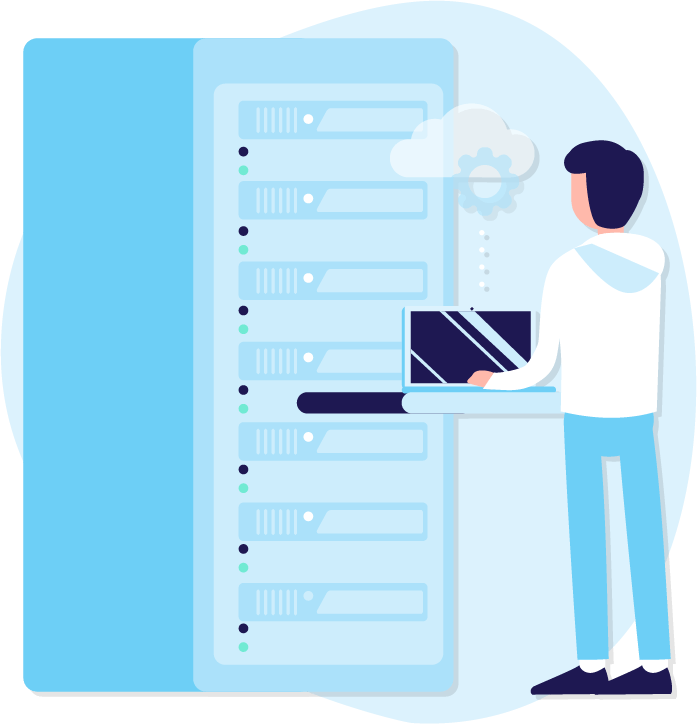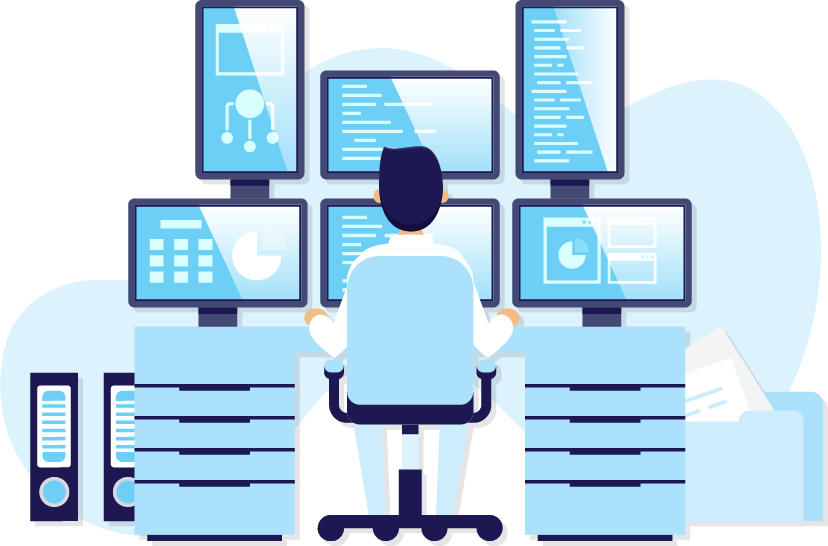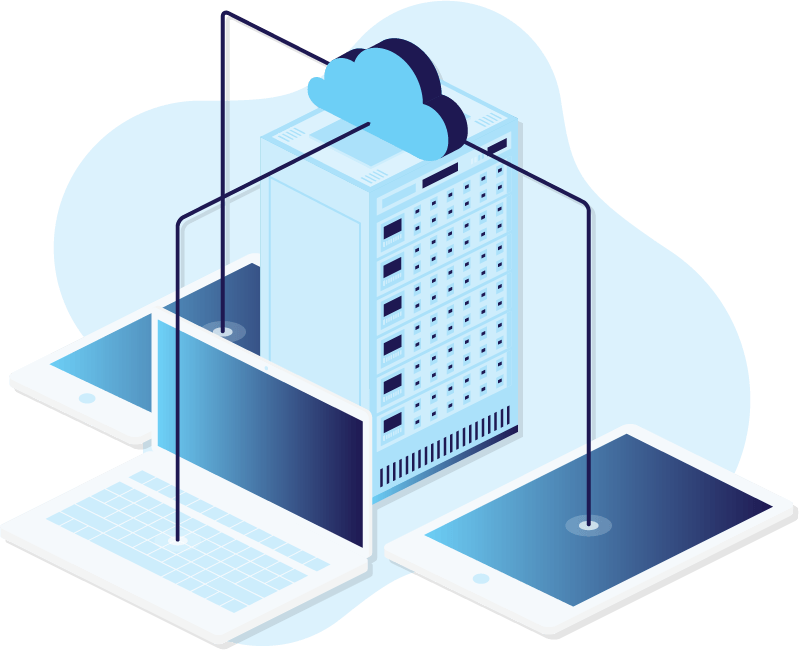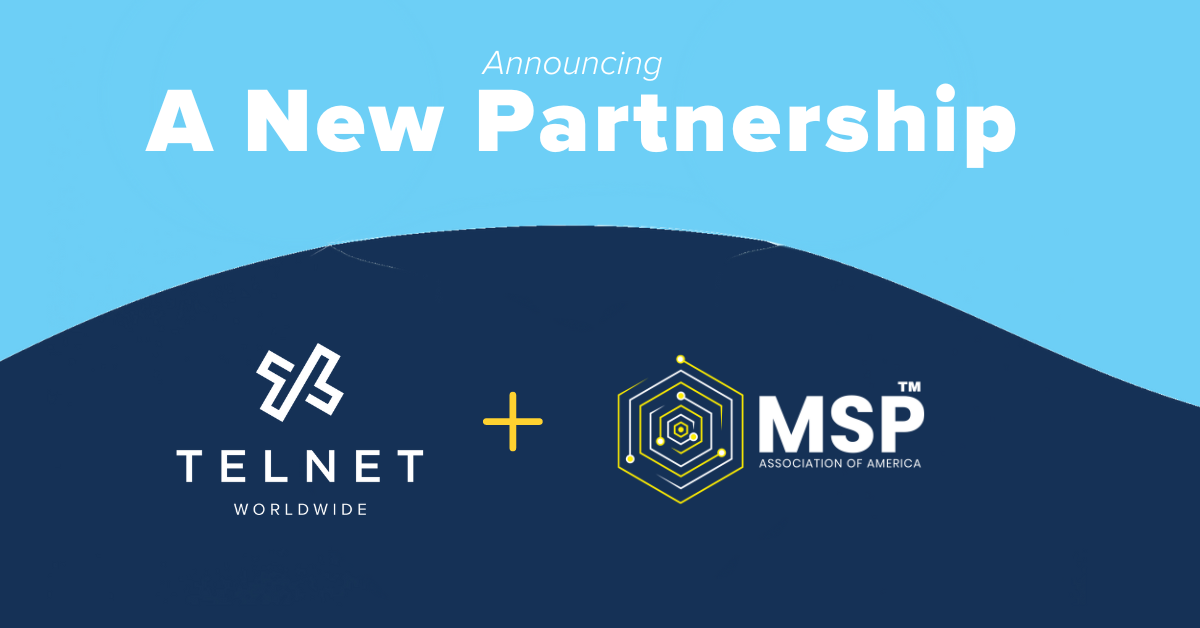It’s estimated that about 1.145 trillion MB of data is created per day around the world. Thanks to mobile devices, internet access and remote work, more data is being created every second than you can really wrap your head around. So how is all this data being processed, stored and shared?
Over the years, IT infrastructure has moved out of house, shifting from on-premise servers to virtual networks. But just because the equipment is (hopefully) no longer kept in a storage closet at your office doesn’t mean it no longer exists — the servers have to live somewhere. And that somewhere is a data center.
What Is a Data Center?

A data center is a secure facility that houses computing and storage devices like routers, switches, firewalls and servers to guarantee uptime, security and reliability. Think of it like an incredibly high-tech and incredibly secure storage unit for your applications.
A Critical Role in Business Operations
Modern data centers are primarily responsible for supporting business-critical applications and workloads — from email and file sharing to CRMs and collaboration platforms to AI and machine learning. And as more and more businesses become reliant on digital transactions, the role of the data center continues to expand.
High-volume ecommerce platforms, online gambling and gaming communities are all powered by data centers. Think of all the data that’s collected during an online transaction. As cyber shopping and gaming become more popular (and sophisticated) they require a lot more bandwidth to run. Hosting ecommerce, gambling and gaming servers in a data center ensures that the user experience is as seamless as possible.
Core Components of a Data Center
In order to maximize security, functionality and efficiency, there are a number of components involved in the modern data center. Let’s break them down by category.
Colocation Space
The first thing you’ll notice when walking through a data center are the endless rows of cabinets. These storage units house racks of servers that provide the processing, storage and network connectivity needed to power your organization’s applications.
These servers are what allow external connectivity to end-user locations, so that your employees (or users) are able to access data and applications from anywhere. There’s also a network of cables, switches and routers involved in your data computing.
Physical and Virtual Security
Security — both physical and virtual — is a key concern for data centers. Physical security measures include multi-stage access control from mantraps and fences to biometrics and access codes. They’ll also have a surveillance system for live video authentication. Virtual security includes things like firewalls and intrusion detection.
You’ll also find Data Center Infrastructure Management (DCIM) systems in many facilities. With thousands of points of data, this will give you 24/7 visibility. Some even have live video feeds and information about your colocation power utilization and temperature and humidity readings.
External Connectivity
It should come as no surprise that your data center needs high-octane internet connectivity. Many facilities are carrier-neutral, providing ready access to local and national providers so that you won’t have to worry about switching. You’ll also find diverse fiber entry points and secure fiber vaults for safe and convenient access.
Uninterruptible Power Sources
Since downtime isn’t really an option for a data center, measures that protect against outages are a necessity. Uninterruptible power sources, or UPS for short, are essentially any kind of equipment that ensures availability — even if the power goes out. They include things like battery banks, generators and other redundant power sources.
Environmental Controls
No doubt you’ve had a computer overheat on you before. It happens to everyone. It’s no surprise that maintaining the appropriate temperature control in a building filled with constantly running servers is critical. In data centers, both temperature and humidity are controlled and managed. Plus, systems for exhaust, fire suppression and HVAC systems come standard.
Staff
The people staffing your data center are just as important as the technology. Most data centers will have staff on hand to monitor operations and maintain equipment around the clock. With a skilled data center staff, you can rest assured that the design, build, implementation and maintenance of your equipment and services is impeccable.

If your organization is paying for managed colocation, you’ll have access to remote hands and on-site support at all times. These certified technicians are available for prompt configuration and troubleshooting, acting as your dedicated support team.
Types of Data Centers
There are a few different types of data centers, based on ownership and location. Let’s get into them.
Enterprise Data Centers
Enterprise data centers are built, owned and operated by a single organization (most often by large tech companies). They are typically located on a corporate campus and optimized for the end users.
Managed Service Data Centers
Managed service data centers are — you guessed it — managed by a third party on behalf of your company. You can lease the equipment and infrastructure instead of buying it yourself.
Colocation Data Centers
Colocation data centers are like server hotels. Your company provides the equipment (servers, storage and firewalls) while the data center owns the infrastructure (building, bandwidth, environmental controls and security). You’re paying to rent out a space (and all of the security, redundancy and power that comes with it).
It’s worth noting that there are two different options for this type of data center: colocation and managed colocation. With colocation, you house and manage your servers on your own. In a managed colocation arrangement, on-site engineers monitor and manage your equipment.
Cloud Service Data Centers

Cloud service facilities are off-premise forms of a data center. Your data and applications will be hosted by a cloud service provider like Amazon Web Services (AWS), Microsoft Azure or IBM cloud. Here, you’re getting access to a public cloud.
Data Center Tiers
Not all data centers are created equal, and this is reflected in a tiered classification system. They can be ranked as Tier I, Tier II, Tier III or Tier IV.
Tier I
A Tier I data center is like your base model car; you’re getting the most basic site infrastructure with single-capacity components. With only a singular system for heating and cooling and a non redundant distribution path, you’ll have limited protection against downtime. These data centers offer 99.671 percent availability with no more than 28.8 hours of downtime per year.
Tier II
A Tier II data center brings you to the next level, with redundant-capacity site infrastructure. It’s like the base model with four-wheel drive. You still only have one path for distribution, but now you are getting partial redundancy in other components like power and cooling operations. These data centers guarantee 99.749 percent uptime and can have up to 22.7 hours of downtime a year.
Tier III
Tier III data centers are like your luxury SUVs. They protect against virtually all physical events with redundant-capacity components and multiple independent distribution paths (N+1). Each component can actually be removed or replaced without any disruption to end users. They offer 99.982 percent availability, allowing for up to 1.6 hours of downtime per year.
Tier IV
For someone looking for all the bells and whistles, a Tier IV data center is your speed. Tier IV data centers provide the highest levels of fault tolerance and redundancy (2N+1). Their redundant-capacity components and independent distribution paths enable concurrent availability, meaning that a fault in a single component wouldn’t result in downtime for the whole system. They promise 99.995 percent uptime with only 24 minutes of downtime per year.
Data Center Business Benefits
As you’ve likely gathered, data centers provide a number of valuable benefits for modern businesses. But let’s recap the most important ones.
Power
Your IT equipment and infrastructure requires a ton of power. In order to keep your mission-critical applications running, you’ll want a data environment with rich, reliable and robust power sources. Our data center, for instance, has a leading-edge 2N UPS design with independent A, B, C and D systems powering all cabinets with active-active feeds. Load densities of 60-600 watts per square foot are standard, but there are custom options for more!
Capacity
With the rate of data expansion, it’s entirely possible that your organization will need to increase its computing capacity. That can be hard to do when you’re limited on office space. A data center will give you the space and power you need to expand or cover overflow. Our 40,000 square foot facility has room to spare.
Security
Data is becoming one of the most valuable assets a company can own, and you need to protect it. Security and business continuity are core responsibilities of a data center. We have the technology, policies and practices to keep your content protected, both at the data center and across your locations. Our facility is protected with multi-stage security from mantraps to PIN and video authentication.
Redundancy
You know how frustrating and debilitating application and system outages can be. With multiple layers of redundancy for critical power, cooling, network and security systems, a data center can guarantee availability and uptime.
TelNet Worldwide’s Data Center
The infrastructure that supports the most business-critical applications is becoming increasingly virtualized. In the digital age, you don’t want to be worrying about outages, downtime and security breaches. Your business needs reliable data storage and delivery with low latency and ultra-fast speeds.
It’s time to host your servers in TelNet’s premier Tier III data center. This secure, purpose-built facility is strategically located and designed to offer your business every advantage of rich power, network and carrier diversity, and the lowest possible latency. What’s stopping you?
Take a virtual tour today.




